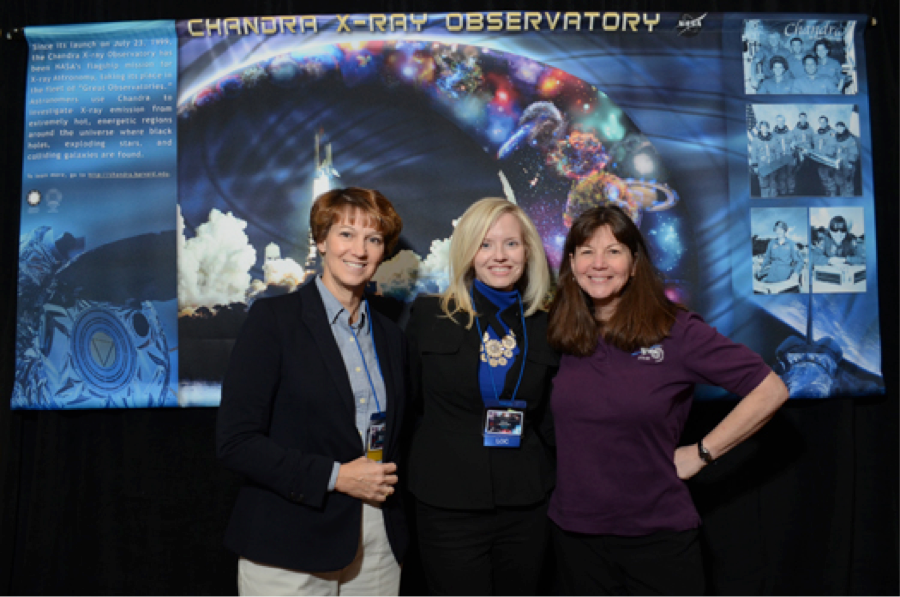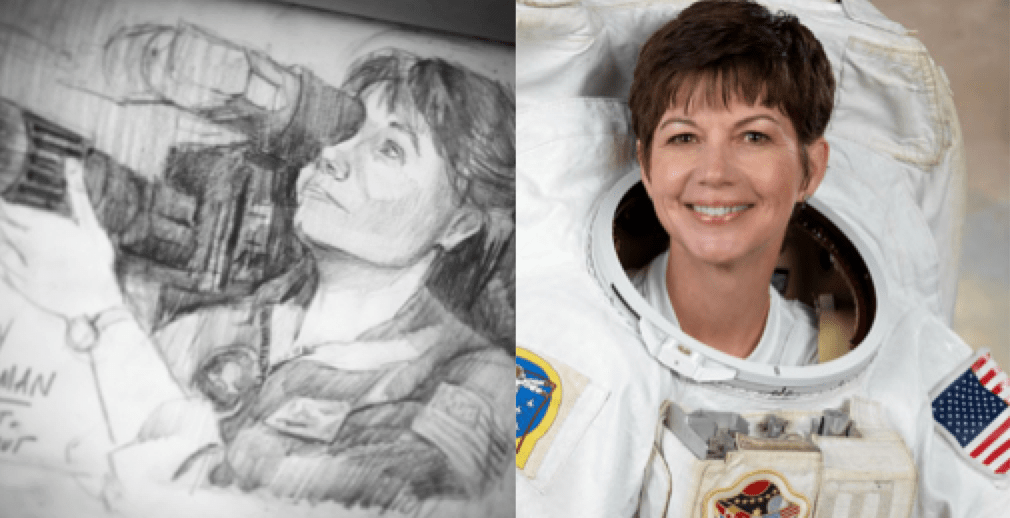Subscribe to our newsletter
Launching a Career in Science and Supporting STEM Pathways #MySTEMrolemodel
As part of Digital Science’s celebrations for Ada Lovelace Day, for the month of October we are running a series of blog posts where inspiring women in STEM are sharing their personal role models. Anyone can get involved and we encourage you to share your role model on social media using the hashtag #MySTEMrolemodel.
Kimberly Kowal Arcand is the Visualization Lead for NASA’s Chandra X-ray Observatory, which has its headquarters at the Smithsonian Astrophysical Observatory in Cambridge, Massachusetts. She studies the perception and comprehension of data visualization across the novice-expert spectrum and is active in the creation, distribution, and evaluation of large-scale science and technology communications projects. She is an award-winning producer and director. Arcand is the co-author of popular science books including the upcoming “Light: The Visible Spectrum and Beyond” with Megan Watzke, to be published by Black Dog & Leventhal on October 27, 2015.
At seven years old, I proudly announced to my parents that I was going to be an astronaut when I grew up. Even though they could not drag me on an amusement park ride more adventurous than a bumper car, my parents apparently thought it best not to discourage me. I had one of those little white plastic Space Shuttle models with a working cargo bay, and I would fly it around my room and make up pretend missions with pink and blue Care Bears serving as the crew.
Alas, it was not the career for me. Neither was being a doctor, which came later (I realized I didn’t like needles), nor a veterinarian (this was quickly squashed by a stint volunteering in an animal hospital). I knew that I wanted to do something in science — I just wasn’t sure what form it would take.
While majoring in biology in college (specializing in parasitology, where I was looking at things on a very small scale), I developed a knack for computers. So perhaps it’s no surprise that my first career-path job would be combining science and technical skills to create web-based and other digital applications. What was a surprise, however, I was working for a NASA mission — transitioning me from looking at very small structures, back to thinking about the biggest things in the Universe.
Joining the staff for NASA’s Chandra X-ray Observatory right before its launch in 1999 was an incredible opportunity. In this new job (headquartered at the Smithsonian Astrophysical Observatory in Cambridge, Mass.), I met women and men who had spent years if not decades creating the hardware and software that would be violently shot out into space via the Space Shuttle, eventually finding its home orbiting our planet almost a third of the way to the Moon. One of the ultimate highlights was meeting the astronaut who was in charge of deploying this special, school-bus-sized and expensive piece of equipment from the Shuttle payload bay: Cady Coleman.
On Flight Day 5 of the STS-93 mission to launch Chandra, the astronauts posed for an inflight crew portrait. Shown: Eileen M. Collins, mission commander, and Michel Tognini, mission specialist (CNES). Behind them are (from the left) astronauts Steven A. Hawley, mission specialist; Jeffrey S. Ashby, pilot; and Catherine G. (Cady) Coleman, mission specialist. (Credit: NASA)
It’s not everyday that you get to meet and spend time with an astronaut. After all, there have been only about 500 people in all of history that have gotten to go beyond the boundaries of Earth. When one of those astronauts is not only intelligent and brave, but also approachable, kind, and well, happens to be the same gender as you, there is an opportunity there to observe and learn.
Cady Coleman might agree. While pursuing her undergraduate degree in chemistry at the Massachusetts Institute of Technology, she went to a talk by Sally Ride, the first woman in space. This singular experience of seeing someone not that different from her do something so incredible was an important marker in Coleman’s career.
Once she graduated from MIT, Coleman completed graduate work in polymer science and engineering at the University of Massachusetts at Amherst in 1991. Afterwards she entered the Air Force and applied for the astronaut program. She had the opportunity beforehand to meet astronaut Kathy Sullivan, a crewmember of three Space Shuttle missions and the first American woman to walk in space. The hour-long discussion with her on the astronaut application process, what the job entailed, and other general advice was another important tool for her career.
Coleman was accepted into the NASA astronaut corps in 1992. Her second mission into space would be as the mission specialist on STS-93 in 1999 for the Chandra X-ray Observatory. Coleman would go on to be the Chief of Robotics for NASA’s Astronaut Office, an aquanaut (underwater astronaut) living and working underwater for eleven days, and 6-month resident of the International Space Station. In total, Coleman has logged more than 4,330 hours in space. Today, Cady is in NASA’s Office of the Chief Technologist and spends much of her time meeting with people, talking about the excitement of space exploration and the technology that makes it all possible.
Left: A drawing of Cady Coleman during one of her Shuttle missions (Credit: Kristin Divona, https://instagram.com/kadillustration/). Right: Cady’s astronaut head shot (Credit: NASA)
My career has also been able to evolve and grow in exciting directions since I first began working for Chandra. Will I ever get to be an astronaut? No, I am happy with my feet planted firmly on the ground. As Visualization Lead for Chandra, I get to use data to tell stories about the Universe, from a tweet about colliding galaxies to a 3D-printed model of an exploded star. I’ve been fortunate to be surrounded by supportive directors, mentors, colleagues and family for the major steps of my career.
Since Chandra’s launch, I have also been lucky enough to stay in touch with Cady. Not only do we share our interest in the continued success of Chandra, we also have common goals of promoting women and other under-represented groups in science, technology, engineering and math (STEM) fields. I have always found Cady to be extremely generous with her time and her talents in all of her endeavors, whether it’s sharing her adventures with aspiring scientists or reflecting on the challenges of her field. A decade and a half after meeting her, Cady continues to inspire me. I’m sure I am not alone in that.
 From left, Eileen Collins (Commander of STS-93 that launched Chandra into space), Kim Arcand & Cady Coleman at the 15th anniversary of Chandra science symposium. Credit: NASA/CXC/A.Solares
From left, Eileen Collins (Commander of STS-93 that launched Chandra into space), Kim Arcand & Cady Coleman at the 15th anniversary of Chandra science symposium. Credit: NASA/CXC/A.Solares
You can read more about Cady Coleman as well as Eileen Collins in this 2-part series.
Role models, mentors, and support networks are incredibly important in STEM careers, whether you are deciding what to be when you grow up, whom your first job might be with, or how to make a change twenty years in. I have tried to make a concerted effort to meet with and talk with as many younger women and girls, as well as boys, each with many different career path interests. If you’re a few decades or even just a few years into your career, take the opportunity if you can to reach out to those around you. You never know which hour-long conversation might encourage a future astronaut, or simply help someone struggling to find a place along the way.


